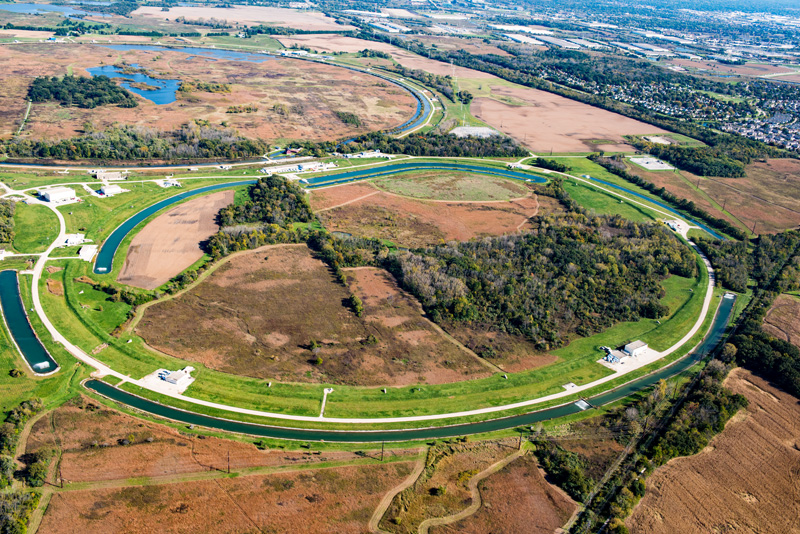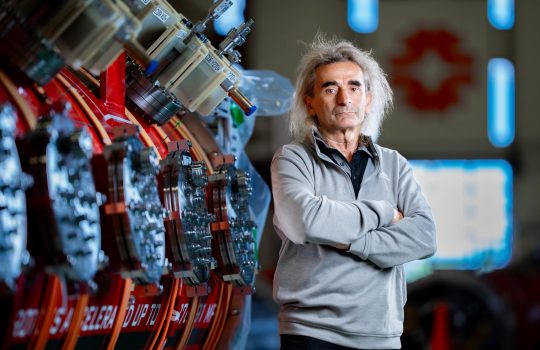The science
Accelerators generate beams of subatomic particles for cutting-edge science. The greater a beam’s intensity, the more opportunities there are to study particle interactions. One way to increase the intensity is to merge two beams with a technique called slip-stacking. However, when combining them, the beams’ interaction may cause instability.
Here, I summarize the results of a study in which I modeled these effects and concluded that a special feedback would make the beams much more stable. The required feedback was then designed and implemented by Nathan Eddy and his Fermilab team. The result was a 20% increase in proton beam intensity and a reduction in beam loss by a factor of 2.

A new method improves the circulating beams in the Recycler Ring (located beneath the ponds shown here), a major component of Fermilab’s accelerator chain. Photo: Reidar Hahn
The impact
Slip-stacking doubles the intensity of particle beams. However, it makes them more prone to instabilities and particle losses. To suppress these undesirable effects, an analysis and resulting feedback helped pave the way for future particle accelerators that rely on slip-stacking to achieve high intensities.
Summary
By stacking two separate, full-to-the-brim beams, researchers maximize the number of particles circulating through the ring. That’s good for creating high-intensity beams, but there’s a trade-off.
Accelerator-generated beams are made of bundles of particles called bunches. Accelerating two separate beams that are not only in close proximity but whose constituent bunches are in a constant dance with each other is a highly charged situation. In Fermilab’s Recycler Ring — a major component of the lab’s accelerator chain — each beam comprises about 500 bunches. Such a high number made coupled-bunch interaction a powerful source of collective instabilities. Partly because the distances between the two slip-stacking beams’ bunches are always changing, the beam dynamics is complicated to model.
One major effect is that the interacting bunches bump each other off their orbits. A mathematical model of the two-beam system was suggested and analyzed, followed by a proposal for a feedback suppressing these undesirable departures from the path. In the feedback system, pickup sensors placed inside the circular accelerator measure the offsets of the bunches from their intended orbits. An amplifier receives this information and then sends it to a kicker that gives the straying bunches a kick that sends them on the right path.
Soon after the idea of the special feedback was proposed, an accelerator team led by Eddy designed and installed the device into the Recycler Ring. As a result, the Recycler beam losses were nearly halved, and the beam intensity increased by 20%; the proton beam power achieved 700 kilowatts, one of the goals of Fermilab’s accelerator program.
Alexey Burov is a Fermilab scientist.



